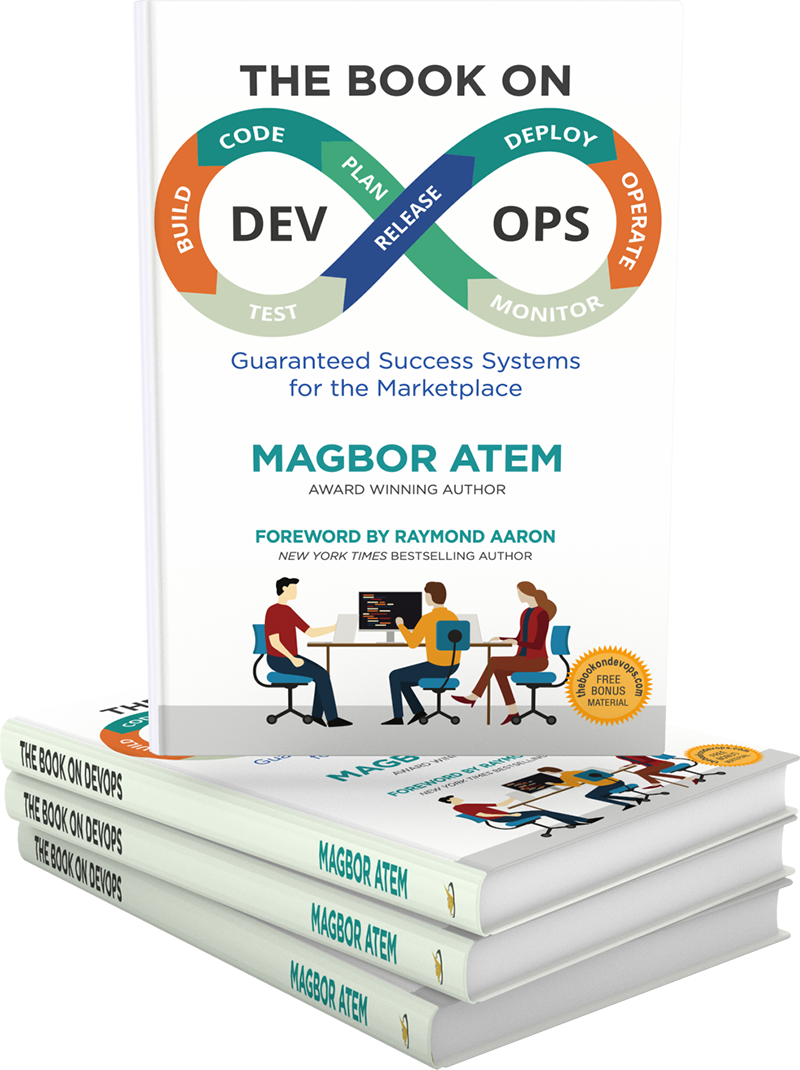The BOOK on DevOps
Guaranteed Success Systems For the Marketplace
The Book on DevOps aims to differentiate you and your company in the marketplace by showing how to tap into trending and innovative methodology to produce software applications more efficiently, effectively, and quickly. It even explores the idea of creating a cultural shift to fundamentally change the way your organization approaches software development.
But change doesn’t have to be complicated. Magbor Atem proves this with a simple, three-step algorithm for creating a success formula for your marketplace. She also shows how to transform that formula into a system you can automate for a high ROI while providing unique and valuable experiences for your customers. It’s magical!
Claim your free bonus by entering your details below to gain access!

About the Author

Mag is working on a Doctorate of Business Administration and holds a Master of Science in Healthcare Informatics from UNC Charlotte, a Master of Science (Distinction) in Management and Marketing from Birmingham City University, UK, a Bachelor of Sciences in Economics and Management from the University of Buea-Cameroon, and a Diploma in Business Intelligence and Web Development.
Mag is an Author and Thought Leader in IT, She is a mentor for women and youths and engages in several community and capacity building initiatives.
The BOOK OF DevOps
Guaranteed Success Systems For the Marketplace
Chapter One: The End
This chapter explains the process of gathering the right requirements and provides tips on how to ask the right questions for the problem you will like to solve.
Without the right questions asked, it is impossible to provide a successful solution. This chapter helps set you up for success.
Chapter Two: Communication as a Success System
Communication -verbal or Non-verbal is key in business, understanding how to leverage the power of verbal or non-verbal communication for day to day activities, interviews, team updates, team development and motivation is what differentiates the A-teams from the B-teams and this is what we cover in detail in this chapter.
Chapter Three: Continuous Integration
A deep delve into how to connect the dots and begin the process of automation for your systems and pipelines. What to integrate, How to integrate, why you need to integrate and where to and not to integrate.The three irreplaceable things required to begin an integration.
Chapter Four: Continuous Delivery
This chapter covers best practices for the complete DevOps roadmap from code to deployment and delivery. It explains important tools like Kubernetes (K8), autoscaling , self healing, load balancing capabilities. This chapter also highlights key inputs to consider from systems and network administration and tools to enable IT Team documentation.
Chapter Five: Continuous Monitoring
This section provides best practice tips on keeping track of the health, availability and take a look at smooth functioning of your DevOps systems. We also uncover how to identify RED issues with your DevOps systems and processes, How to effectively secure site reliability and The three main kinds of output to expect. Benchmarking.
Chapter Six: Implementing Successful DevOps Systems
This chapter provides in-depth step by step processes on how to shop for the right DevOps tools, setting up your production and non production environments, how to leveraging infrastructure as Code and popular Infrastructure as Code that add significant value to your team’s productivity.
Chapter Seven: Managing Successful DevOps Teams
Chapter Seven explains how to successfully manage your DevOps Team. In this chapter we explain how to create a success culture and boost the capabilities of every team member. We provide highlights on how to manage the work and processes versus the team -a critical skill for every DevOps engineering manager
Chapter Eight: The Bottom Line
This chapter brings it all together. The Bottom Line reveals how to maintain a continuous High Return on Investment (ROI) for every DevOps team. This chapter also explains critical DevOps concepts of High availability, High Scalability, High efficiency, High Quality, Continuous Improvement of the system.
Chapter Nine: Secrets for Continuous Consistent Success
This chapter provides important tips on how to automate processes, create standard work and maintain success.
Bonus: Summary and Cheat Sheets
